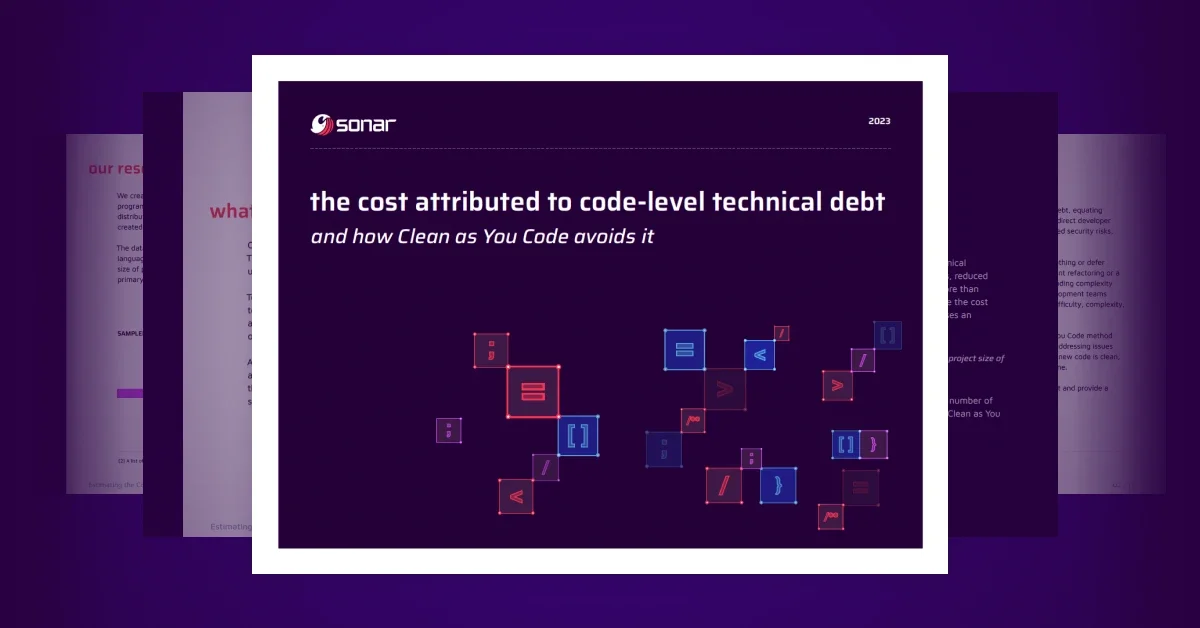Today, we are releasing new original research that puts a spotlight on the millions of dollars that businesses lose when they fail to implement an optimal approach for software development.
The research, based on an examination of over 200 projects within a 12-month span, calculates that the attributed technical debt cost is $306,000 per year for a project of one million Lines of Code (LoC). This is equivalent to 5,500 developer hours spent on remediation, development time that could be put towards more innovative and valuable projects.
With the ongoing developer shortage, teams simply can’t afford to spend hours on fixing avoidable issues in code — IDC predicts a global shortfall of four million developers by 2025. Beyond this, technical debt can result in lower product quality, increased security risks, inferior business results, and reduced developer velocity, efficiency, and morale.
Whether it’s due to limited resources or lack of investment, when issues in software development are left unresolved, the result is future rework that can build up over time. With the growing adoption of generative-AI for code creation having the potential to proliferate a sub-standard codebase, attention on code quality becomes a business imperative.
To tackle the impact of technical debt, we strongly propose that organizations implement a Clean as You Code methodology to address issues in code that is added or changed, to prevent bad code from reaching production in the first place. Clean as You Code frees developers from the burden of dedicating cycles to fixing old, haphazard code, and enables them to focus on creating exciting, innovative features and products. This simple yet powerful methodology progressively improves the overall quality of the entire codebase with minimal development cost and effort. The codebase becomes clean, increasing software value and saving businesses the devastating cost of technical debt associated with dirty code. When all new code is clean, the overall technical debt does not increase and progressively reduces over time.
Some highlights from the research:
- Over a five-year period, it's estimated that costs due to technical debt for one million lines of code can reach $1.5 million (equivalent to 27,500 developer hours). On top of this, technical debt issues become increasingly complex and burdensome when left unaddressed, impacting overall software quality.
- Every month, code-level technical debt grows as new issues are added. The volume of new issues created per month varied over the 12 months across all the analyzed projects.
- Employing a Clean as You Code methodology allows organizations and their developers to avoid the expensive cost associated with technical debt as well as overcome the negative long-term impacts by preventing bad code from reaching production in the first place.
Check out the full cost of technical debt report.
Report Methodology
The report, “Estimating the Cost Attributable to Code-Level Technical Debt,” attributes the maintenance cost of fixing coding issues by examining over 200 real-world projects of varying sizes and programming languages (27% contained multiple languages) within the span of 12 months. The data extracted totaled approximately 11M Lines of Code (LoC), and the average size of projects examined was approximately 500,000 LoC. The extrapolated data was analyzed using SonarQube Server, a self-managed code analysis offering from Sonar, and used to calculate the forward impact of not employing a Clean as You Code methodology. Analysis of the data portrayed a split between issues classified as "critical”, those that block forward progress and manifest bugs and vulnerabilities, and "others”, problems in the code that require attention and may potentially lead to maintainability issues or serious flaws downstream if not attended to.

